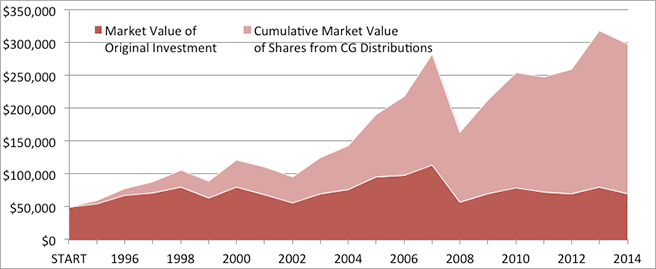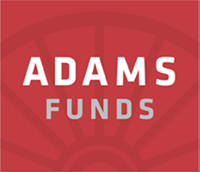Benjamin Franklin, in 1748, offered some sage guidance as it relates to money and investing in his essay: "Advice to a Young Tradesman". “Remember that money is of a prolific generating nature,” he wrote. “Money can beget money, and its offspring can beget more, and so on.”
While he doesn’t say it explicitly, he was referring to the power of compounding growth, a theme that is every bit as relevant for today’s investors as it was in Franklin’s day.
Compounding
Shareholders who reinvest their distributions receive the benefits of the investment principle known as compounding. When you reinvest your distributions in new shares, you earn distributions on a larger share base, so that your money grows faster. Even small growth can accrue quickly.
The benefits can be even more substantial for investors in a closed-end fund. Research shows that reinvesting the distributions from a closed-end fund that is trading at a discount to its net asset value, or NAV, can amplify returns, as each reinvestment purchases more shares and enables you to put more than a dollar of net assets to work for every dollar reinvested.
Consider the following hypothetical example. If you had invested $50,000 in Adams Natural Resources Fund at the beginning of 1995 and took all of the distributions paid out by the Fund over the next 20 years in cash, the value of the shares acquired with your original investment would have grown by 42% at the end of 2014. However, if you had reinvested all of your distributions during that same period, the value of your shares would have grown by 499%* (see graphic below).

Dollar cost averaging
Other benefits also support the case for reinvestment. Automatic dividend reinvestment, for instance, delivers a similar effect as dollar-cost averaging. Because you’re investing periodically, you’re buying additional shares on an ongoing basis. This means that you avoid purchasing the fund only when the price is high and instead average the cost of acquisition continually.** This also eliminates the challenge of trying to time the market.
Total Returns
As it relates to total return net of fees and taxes, it’s important to consider that dividend reinvestment plans carry no commission or service fees for reinvesting the year-end distribution through our transfer agent. (Quarterly reinvestment does incur commission and service fees, however). Moreover, there are no tax consequences for reinvesting distributions from investments within a 401k, 403b, traditional or Roth IRA, or any other tax-sheltered plan.
Two Choices for Reinvesting Dividends and Capital Gains
Investors can implement reinvestment plans through one of two ways:
- Through our transfer agent, American Stock Transfer & Trust Co. (AST)
New investors may enroll in AST’s INVESTORS CHOICE plan with an initial investment as low as $250. There is no initial minimum for current shareholders. You may buy shares conveniently and economically either by direct debit to your bank account or by using a check. You can also invest amounts as low as $50 per month through automatic bank deductions. In addition, cash distributions can be reinvested to purchase additional shares of the Funds directly through the Plan. If you choose not to reinvest your distributions, you may elect to have them deposited directly into your own bank account by electronic funds transfer. - Through your broker.
Most brokers offer dividend reinvestment programs through which your holdings of Adams Diversified Equity Fund or Adams Natural Resources Fund can grow. Contact your broker and ask to have your distributions reinvested through their reinvestment plan.
Reinvestment, in following the guidance of Ben Franklin, allows investors to use money to beget money. Instead of taking distributions in cash, shareholders in Adams Funds can choose to reinvest distributions and receive additional shares of stock. Consistently reinvesting the distributions adds to your total return, providing long-term benefits, and has been the strategy of choice for thousands of Adams Diversified Equity Fund and Adams Natural Resources Fund shareholders over time.
The quarterly shareholder reports for Adams Diversified Equity Fund and Adams Natural Resources Fund provide additional information. Consider your options carefully and choose the method that will work best for your investment goals.
